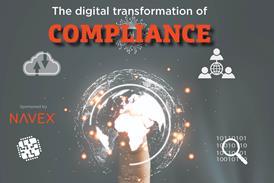At the request of subscribers, Compliance Week offers a Remediation Center, in which readers can submit questions—anonymously—to securities and accounting experts. Compliance Week's editors will review all questions and then submit them—confidentially, of course—to specialists who can address the issues. The questions and responses will then be reprinted in a future edition of Compliance Week. Below is one of the Q&As; ask your own questions by clicking here.
QUESTION
As a result of our fiscal 2006 audit, our external auditors are preparing a “management letter” on our internal control over financial reporting that may include one or more material weaknesses. (We don't know exactly what will be in the letter.) We are a non-accelerated filer, and have two questions: (1) To whom will our auditors present this letter, and (2) Are we required to make some sort of disclosure about this in our 10-K filing?
ANSWER
In the scenario you describe, it appears that management and the auditors should have had a more immediate and open dialogue regarding the conclusions reached on internal control effectiveness. Most telling is that management was not made aware of the letter's content before the external auditor issued the letter. The first piece of advice is that management should re-examine the communication effectiveness with your external auditor, since information should be freely shared both during and at the conclusion of the audit and well before the issuance of the final letter.
Precious little time is available between the completion of the external audit and the filing of the financial statements to ascertain whether, in the external auditor's opinion, a material weakness indeed exists, and, if so, to answer two important questions. These two questions will determine if management, with the support of the audit committee, should begin further dialogue with the external auditor to reach a common understanding. These questions are:
After consideration of the cause(s) of the material weakness and identification of any mitigating controls, does management believe a control gap truly exists?
If so, does management agree that the effect of the gap is material, taking both qualitative and quantitative factors into account and referencing the guidance from the Securities and Exchange Commission and Auditing Standard No. 5?
Hopefully, any material weakness the company has is not severe enough to affect investor decision making or result in a misstatement of financial reporting and disclosures. If it is the case that management discovers a financial reporting misstatement or any other information that management deems of importance to security holders, management is obligated under Section 409 of the Sarbanes-Oxley Act to file an 8-K disclosure.
In the SEC final rule that went into effect on Feb. 20, 2007, (Internal Control Over Financial Reporting in Exchange Act Periodic Reports of Non-Accelerated Filers and Newly Public Companies), non-accelerated filers are under no obligation to disclose any material weaknesses or conclusions on the effectiveness of internal controls over financial reporting in their quarterly 10-Q and annual 10-K reports pursuant to the provisions of Exchange Act Rule 13a-15 or 15d-15, until they have filed their first management report on internal control over financial reporting as of the end of their first fiscal year ending on or after Dec. 15, 2007. But non-accelerated filers are still obligated to disclose material weaknesses to their audit committee per the provisions stated in Paragraph 5 of the Section 302 certification.
Still, it has been commonplace for non-accelerated filers to make internal control disclosures in a “Controls and Procedures” section toward the end of the 10-Q or 10-K. The disclosure is expressed as a conclusion reached by the chief executive officer and chief financial officer about the adequacy and effectiveness of internal controls and procedures over financial reporting. Additionally, management may also state if there is any change in internal controls during the most recently completed fiscal quarter that has materially affected, or is reasonably likely to materially affect, the company's internal control over financial reporting. A good example of such a change, for better or worse, is the implementation of a major financial reporting application.
In the event that management decides to publicly disclose a material weakness (either voluntarily or as required by Section 409), management should keep in mind that a public disclosure of a material weakness, as long as it is not so severe to result in a material financial misstatement or affect investor decision making, and was not intentionally perpetrated by management, has seldom been punished by the financial markets when the company takes an aggressive approach to remediation and continues to maintain public trust in its disclosure practices.
As to the manner in which material weaknesses are to be disclosed, one would do well to heed the comments of Don Nicolaisen, former chief accountant of the SEC: “For those companies who do disclose material weaknesses, it will be important that they do so in a manner that enables investors and other market participants to carefully evaluate the circumstances underlying the material weakness. Some material weaknesses may have a greater or lesser impact on an investor's decision process. In many cases this decision will likely be influenced by the fullness of management's disclosure, the underlying causes of the material weakness, and management's actions to address the material weakness. This is intended to be an open process whereby investors can evaluate both the weakness as well as management's actions to improve controls.”











No comments yet